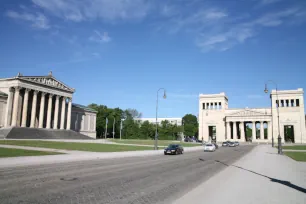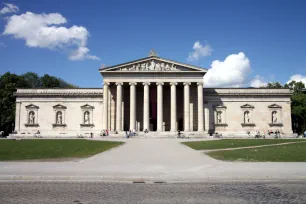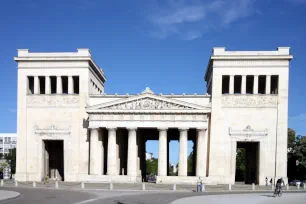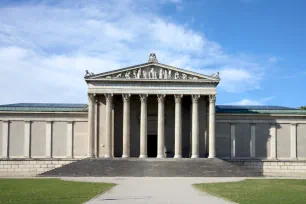Munich’s Königsplatz has been through a number of transitions since the idea for the square was devised in 1812. As winds of change blew through Germany in the twentieth century, so did they blow through the area known as The King’s Square.
The Original Plans


Karl von Fischer drew up the plans for the Königsplatz in hopeful anticipation of the expansion of the city of Munich. He and Leo von Klenze viewed the new square as a “forum for the arts” – a place where Munich residents could enjoy a wealth of visual and performing arts presentations and displays. This was to be the cultural area of Munich, in contrast to the Ludwigstraße, which was described as the “forum for the sciences”.
In 1815 King Ludwig I commissioned the Königsplatz, yet it wasn’t completed until 1862, nearly fourteen years after Ludwig abdicated the throne. Three classical buildings eventually occupied the area – the Propyläen (an ornate gateway), the Glyptothek (a collection of ancient Greek and Roman Sculpture), and the Antikensammlungen (a museum of antiquities).
It had been Ludwig’s dream to turn Munich into another Athens, and he believed his plan for the Königsplatz would help accomplish his goals.
Changing Times
From 1933-35, however, things changed at the Königsplatz. This was the era of Adolf Hitler, and the square soon became the National Socialists’ “Akropolis Germaniae” in what had become known as the “Capital City of the Movement”.

Architects Paul Ludwig Troost and Leonhard Gall were responsible for the changes made to the Königsplatz.
Grassy areas were covered with granite, and the Neoclassical buildings were used for large Nazi rallies. Trees were removed, and the buildings took on different functions. One housed the offices of the National Socialist Workers’ Party of Germany, while another was known as “The Führer’s Building”. Additional buildings, known as the Temples of Honor, were eventually blown up after the war to symbolize the fall of the Nazi party.
The New Königsplatz

Today, grass and trees once again grow at this historical square. Thanks to a hefty renovation project completed in 1988, the Königsplatz and its buildings have been restored to its original grandeur.
Here you can visit the Glyptothek which has a collection of Greek and Roman sculptures. Alternatively, you can visit the Staatliche Antikensammlung across the street, which has many artifacts from the Antiquity and is best known for its collection of 650 Greek vases, a collection originally started by King Ludwig I.

